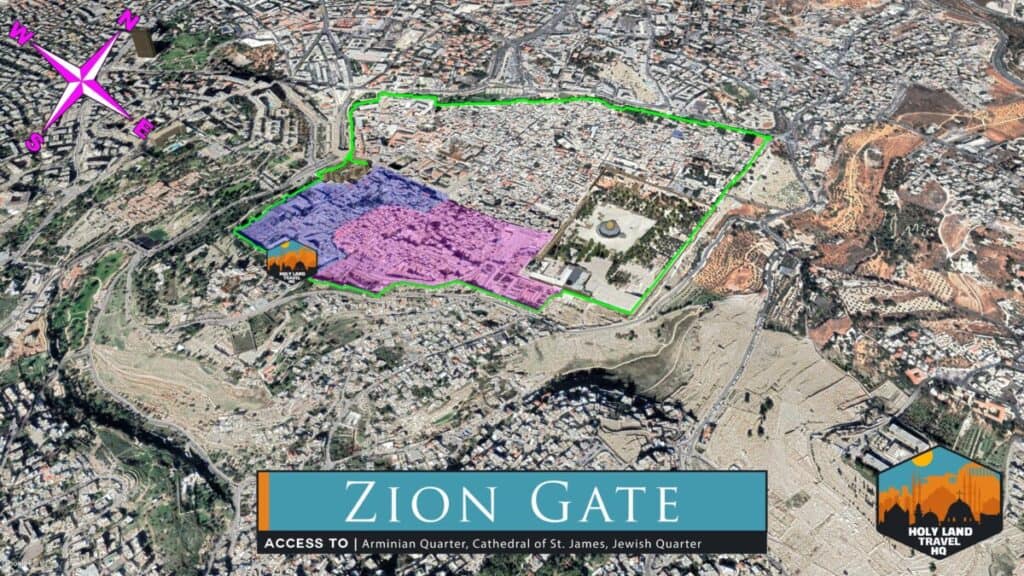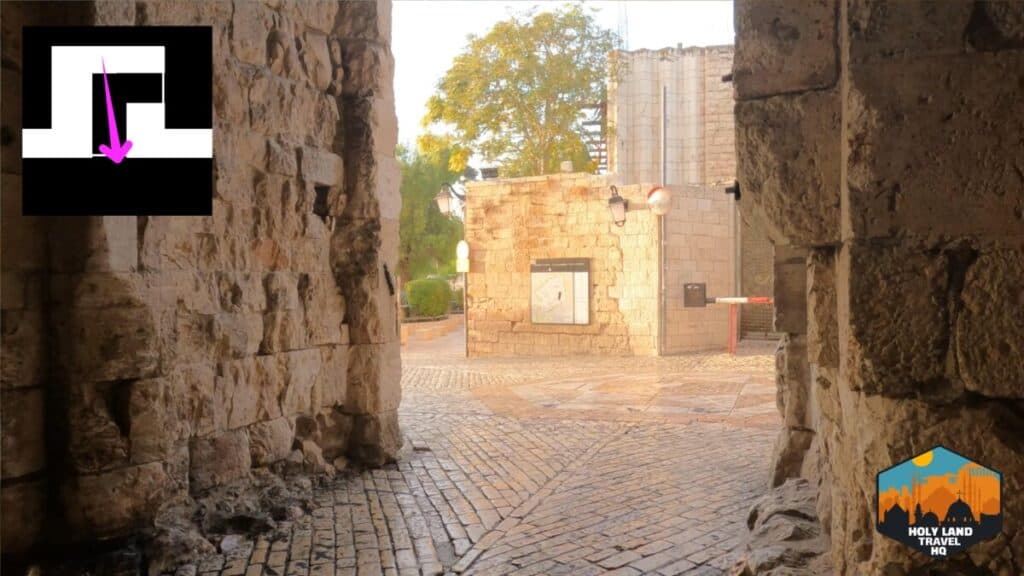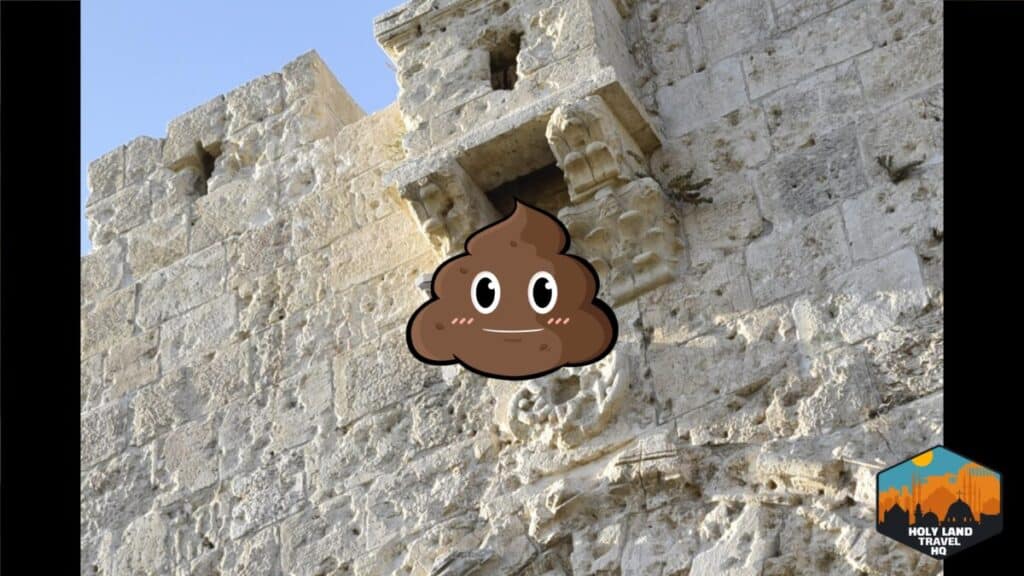- Gates Main
- Jaffa Gate
- Zion Gate
- Dung Gate
- East Gate (also known as Golden Gate)
- Lion’s Gate
- Herod’s Gate
- Damascus Gate
- New Gate
Location of Zion Gate.

Zion Gate, is located on the western portion of the southern side of the Old City. It provides access between Mount Zion, the Jewish Quarter and the Armenian Quarter.
What are the Hebrew and Muslim names for Zion Gate?
The gate’s name goes back to the 12th century when an earlier iteration of the gate was first referred to as Zion Gate by the Crusaders on the Cambrai Map. The Modern Hebrew name is Sha’ar Tsion (שַעַר צִיּוׄן), which just means Zion Gate. Arabs have two names for the gate, the first is Bab a-Nabi Daoud (باب النبي داود) or the ‘”‘Door of the Prophet David.'”‘ This is because the resting place of King David is thought to be on Mount Zion. The second name is Bab Harat al-Yahud or the ‘Door to the Jewish Quarter.’
History of Zion Gate.
During the 1948 Arab-Israeli War, or what the Israelis call the War of Independence, Zion Gate was the site of intense fighting as Israeli forces tried to break through the gate several times unsuccessfully. The pockmarks that you see in the stone on the outside of the gate are from impacting bullets. Because of this, Israelis sometimes refer to the gate as “The Wounded Gate” or “The Crying Gate.” But officially it is called Zion Gate, and this is what you will see on all signs and maps. Between 1948 and 1967 the Old City and Zion Gate with it, was occupied by Jordanian forces.
Though the gate’s name goes back to the 12th Century, according to the inscription above the gate, the current structure was built by the Ottomans under Suleiman the Magnificent between 1540 and 1541.
Layout of Zion Gate.
The gate has an L-shape, or 90-degree layout. The purpose of this design is to slow attackers down by forcing them to make an immediate turn if they can breach the outer doors.

Slits on either side of and above the gate allow defenders to observe and shoot at attackers. There are also slits inside the L-shape turn that allow defenders to strike at attackers who get stuck in the structure. An enclosed mashikuli balcony is located directly above the gate on the rampart outside. Again, this is a balcony with an open bottom that allows defenders to drop unsavory things on attackers such as hot oil or excrement.

Inside the gate is a chiseled stone plaque that commemorates the 1948 war and the attempts to breach Zion Gate. When visiting the gate, be aware that it is also an active vehicle gate.
A couple hundred yards to the east of the gate are the remains of an Ayyubid tower that dates to at least the 13th Century. It’s very possible that this might have been part of, or is the actual Zion Gate which is referred to in the Crusader map.
References:
https://dannythedigger.com/zion-gate
https://historicalsitesinisrael.com/en/zion-gate-jerusalem
https://www.biblewalks.com/ziongate
Matev, Ami. “One Square Kilometer: The Old City – A Guide to the Sites. 2015. Old City Press.

